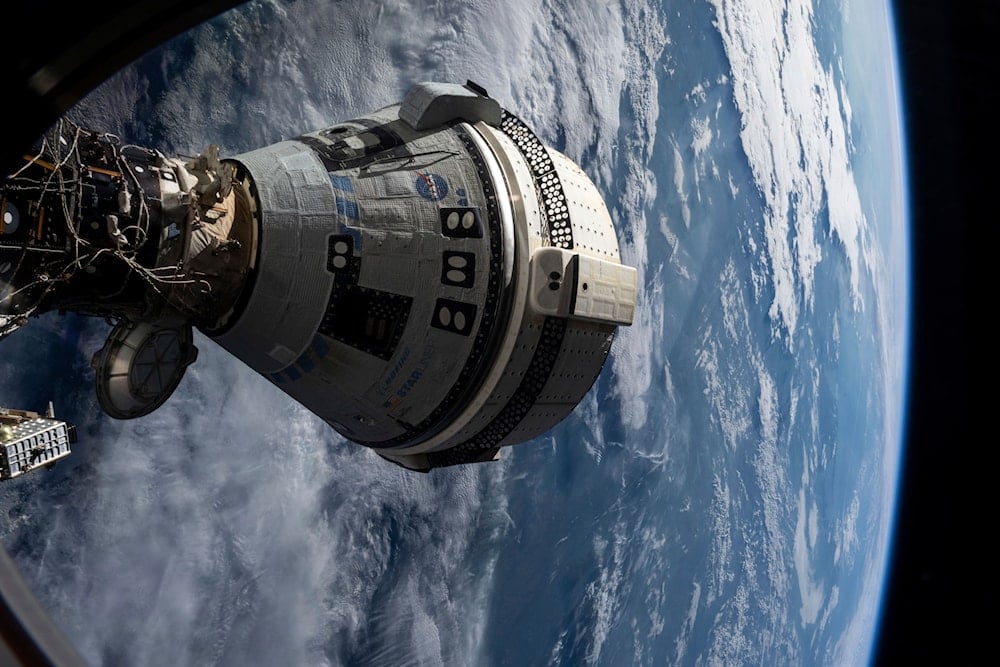Astronauts stuck in orbit to return in February, NASA says
NASA astronauts stuck on the ISS after a Boeing spacecraft malfunctioned will be brought back on board a SpaceX craft in February.
-

In this photo provided by NASA, Boeing's Starliner spacecraft is docked to the Harmony module of the International Space Station on July 3, 2024, seen from a window on the SpaceX Dragon Endeavour spacecraft docked to an adjacent port. (NASA via AP)
NASA announced that the two astronauts, Sunita “Suni” Williams and Barry “Butch” Wilmore, who have been stuck on the International Space Station for months, will return to Earth on a SpaceX-crewed Dragon flight in February.
This was decided after consultations and reviews with Bill Nelson, the agency administrator, all of which later determined that a return on their initial spacecraft, Boeing’s Starliner, included too many uncertainties after leaks and failed thrusters were discovered.
Butch and Suni boarded the Boeing Starliner on June 6 before it was approved by NASA, and were scheduled for an eight-day trip which soon turned into months of waiting amid the dysfunction of the craft's thrusters as it first tried docking.
Both astronauts have since taken part in space maintenance and have reportedly recorded over 100 hours of work across 42 different projects.
Currently, four out of the five thrusters have regained function. The Associated Press explained that the thrusters' role was to ensure the correct positioning of the craft after it undocks.
On August 2, Boeing announced that it had extensively tested the propulsion system of its Starliner spacecraft, confirming that 27 of 28 thrusters were fully operational. Despite these improvements, Boeing, which has faced challenges competing with SpaceX and incurred $1.6 billion in losses on the Starliner program, will bring the spacecraft back uncrewed in September.
NASA defends Boeing despite malfunction
In a press conference on Saturday, Bill Nelson claimed the space agency would continue to work with Boeing despite the malfunction, saying,g "I want you to know that Boeing has worked very hard with NASA to get the necessary data to make this decision. We want to further understand the root causes and understand the design improvements so that the Boeing Starliner will serve as an important part of our assured crew access to the ISS."
He further explained that space flight is never safe or routine, noting that the decision to keep each of Butch and Suni on the ISS and bring the Starliner back home uncrewed is a "commitment to safety."
NASA's commercial crew program manager, Steve Stich, explained that due to the uncertainty surrounding the thrusters' performance during critical maneuvers, it was deemed too risky to return with a crew on board.
When asked about trusting Boeing, NASA associate administrator Jim Free stated that the situation with Boeing isn't a matter of rebuilding trust but rather a difference in how the two organizations interpret the data and manage uncertainty. He emphasized NASA's reliance on its technical expertise and experience.
On the other hand, Ken Bowersox, associate administrator of NASA’s space operations, acknowledged the "tense discussions" with Boeing, noting that while people are emotionally invested in their positions, it’s important to maintain team cohesion and work through the challenges to be ready for future issues.
NASA's history of dismissing crew safety
In June, a livestream showed a crew member on the ISS in "extreme medical distress" during a medical drill.
The incident gained the attention of social media users and prompted alarmed responses, forcing the agency to deny the emergency in a post on X, claiming, "Audio was inadvertently misrouted from an ongoing simulation where crew members and ground teams train for various scenarios in space."
NASA's live stream was interrupted, displaying a message relaying that the video would continue when "connection is reestablished". Shortly after, an unnamed flight surgeon working at the SpaceX mission control center in California appeared to be issuing a warning to others on board the ISS regarding a serious incident involving a commander experiencing decompression sickness.
The audio said, "So if we could get the commander back in his suit, get it sealed … for suited hyperbaric treatment … Prior to sealing, closing the visor and pressurising the suit, I would like you to check his pulse one more time."
She also expresses her concerns regarding her prognosis, but mentions that it was "tenuous".
Social media users and popular space accounts, which had been watching the live stream were quick to raise concerns and go as far as to call it "odd and disturbing". A space editor at tech publication Ars Technica, Eric Berger, described the live stream as scary.

 4 Min Read
4 Min Read








